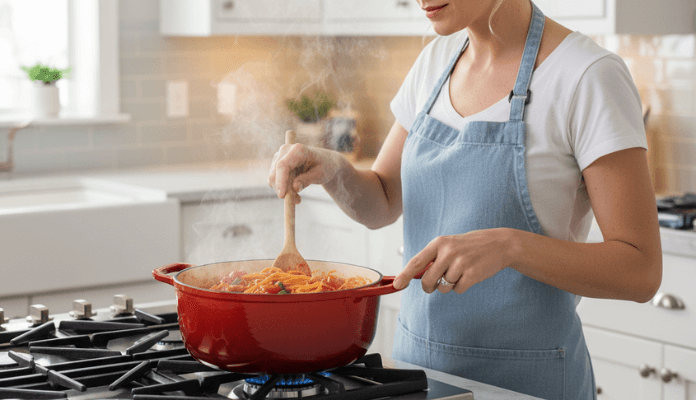
The Heat Guide: What Temperature Is Too Hot for Cookware?
Heat brings food to life—but it can also shorten the life of your cookware. From warped pans to damaged coatings, knowing how hot is too hot makes the difference between cookware that lasts a year and cookware that lasts a lifetime.

1. Why High Heat Isn’t Always Your Friend
Most home cooking doesn’t require extreme temperatures. Cranking burners to full blast may seem faster, but it can scorch food and stress your cookware. The result? Warped bases, discolored surfaces, and weakened nonstick coatings.
2. The Safe Zones for Different Cookware
-
Nonstick Pans
Nonstick coatings begin to degrade above 500°F (260°C). Medium heat is plenty for eggs, pancakes, and delicate foods. Use high heat only briefly, and never preheat an empty nonstick pan. -
Stainless Steel
Built tough, stainless steel tolerates higher heat. Still, prolonged use at max flame can cause discoloration (a rainbow tint) or warping. Stick to medium or medium-high for most tasks; reserve high heat for searing. -
Cast Iron
Cast iron thrives under high heat, but gradual heating is key. Sudden blasts of heat can crack or warp the pan. Always preheat slowly and evenly. -
Enameled Cookware
The enamel coating is sensitive to extreme heat. Keep it under 450°F (232°C) to prevent chipping or surface damage. -
Aluminum and Copper
These metals heat fast and evenly but are prone to warping at extreme temps. Moderate heat gives you control while preserving the pan’s structure.
3. The Danger of Empty Preheating
Preheating cookware before adding oil or food is common—but beware. Empty pans heat faster than you think, often reaching damaging temperatures in just minutes. Always add a small amount of oil, water, or food when preheating to buffer the surface.
4. Signs You’ve Gone Too Hot
-
Warping or wobbling bottoms
-
Discolored or rainbow-like finishes
-
Flaking or peeling nonstick coating
-
Food sticking more than usual
If you notice these, your cookware may have suffered heat damage.
5. Smarter Heat Habits
-
Use medium heat for most cooking; it’s gentler on cookware and still delivers flavor.
-
Preheat gradually rather than blasting burners.
-
Match pan size to burner size to avoid concentrated hot spots.
-
Trust your cookware: well-made pans don’t need extreme heat to perform.
Final Thought
Cooking isn’t about how hot your pan gets—it’s about control. By respecting your cookware’s heat limits, you’ll protect your investment, cook more evenly, and enjoy meals that taste better without burning through your tools.
